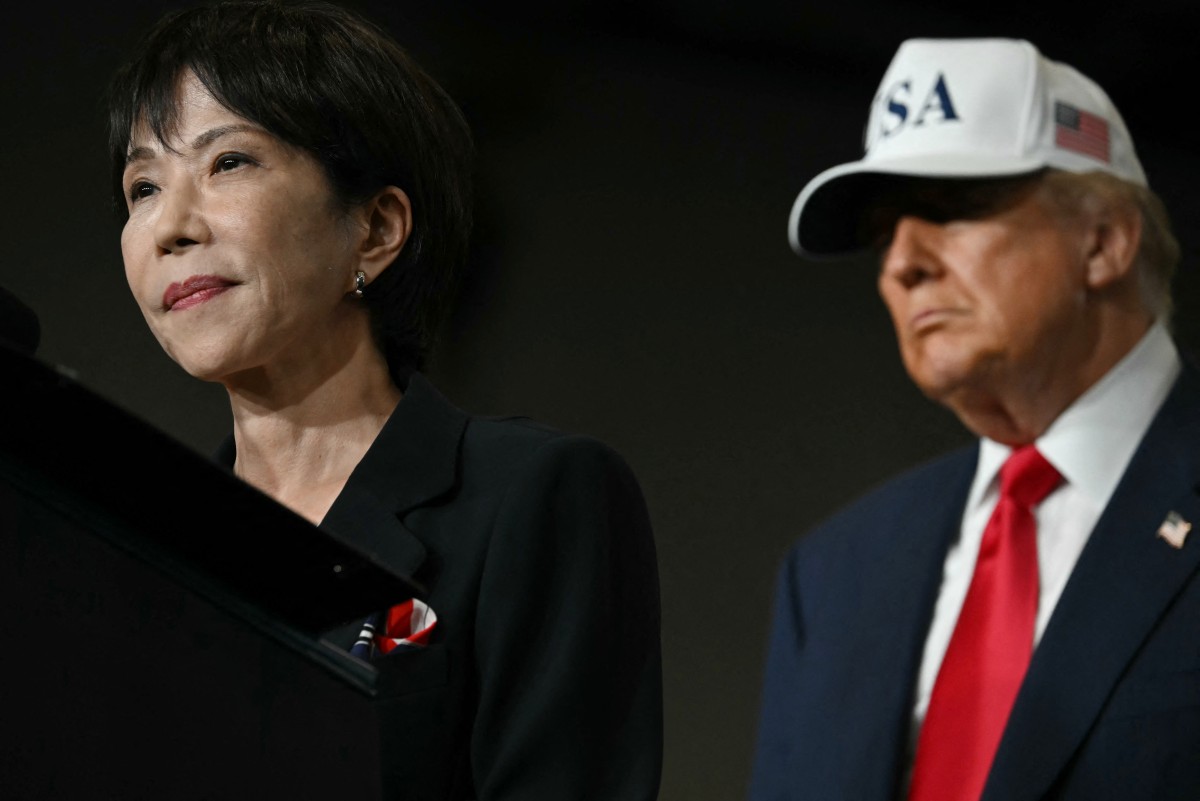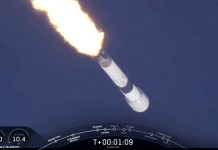Japanese Prime Minister Sanae Takaichi has openly declared that any Chinese attack on Taiwan would constitute a direct threat to Japan’s survival—and that Tokyo would be prepared to join military action to repel it.
The statement marks the strongest linkage ever made by a sitting Japanese leader between Taiwan’s fate and Japan’s own national security, instantly escalating tensions with Beijing.
During a parliamentary session earlier this month, Takaichi described a hypothetical Chinese naval blockade or invasion of Taiwan as a “survival-threatening situation.”
This phrasing invokes the right to collective self-defense according to the 2015 security legislation. Therefore, indirectly implying that Tokyo could deploy its Self-Defense Forces (SDF) in response to Chinese aggression against the self-ruled island state of Taiwan.
In response, China has launched a scathing attack on Japan.
“It is shocking that Japan’s current leaders have publicly sent the wrong signal of attempting military intervention in the Taiwan issue, said things they shouldn’t have said, and crossed a red line that should not have been touched,” Chinese Foreign Minister Wang Yi said on November 23.
China maintains that the self-ruled Taiwan is a renegade Chinese province and has vowed to unite it with the Chinese mainland—using force, if necessary.
The tensions between the two countries have been billed as the worst since the 2012 standoff during the Senkaku Island crisis.
China took the matter to international forums and denounced Takaichi’s statement as a grave violation of international law.
“If Japan dares to attempt an armed intervention in the cross-Strait situation, it would be an act of aggression,” China’s UN Ambassador Fu Cong wrote in the letter. “China will resolutely exercise its right of self-defense under the UN Charter and international law and firmly defend its sovereignty and territorial integrity.”
While China has insisted that Takaichi retract her statement, the Japanese Prime Minister has refused to do so, insisting that she would avoid discussing such scenarios publicly.
As part of punitive measures, China has suspended imports of Japanese seafood. Additionally, it dispatched military drones past Japan’s western-most territory, Yonaguni Island, on Taiwan’s east coast, and a coastguard fleet through the disputed waters surrounding the Senkaku Islands over the weekend.
Not just that, China apparently reached out to the US President to resolve the issue. In a rare call to Donald Trump on November 24, Chinese President Xi Jinping urged the United States to help safeguard the post-WWII international order.
A few hours later, Takaichi also called Trump, after which she disclosed that she had discussed China relations during their conversation.
Interestingly, Trump did not mention Taiwan in a Truth Social post after his call with Xi, sparking speculation that he deliberately maintained ambiguity on the issue and refused to take sides in the China-Japan diplomatic bickering.
This is particularly noteworthy because when Trump met Xi Jinping last month, he told reporters that the issue of Taiwan did not come up in the conversation.

Why Is Japan Threatening China Over Taiwan?
It is pertinent to note that Takaichi had been questioned about what would trigger Japan’s 2015 “collective self-defense” laws, which exempt the country from its postwar prohibition on the use of force to resolve international conflicts. However, she has not answered that question yet, maintaining ambiguity amid escalating tensions.
Notably, Taiwan is just 110 kilometres from Japan’s Yonaguni Island, and missiles or naval blockades targeting Taiwan could easily strike Japanese territory or disrupt vital sea lanes.
Taiwan lies just 170 km from the Japanese-controlled Senkaku Islands (Diaoyu in China), territory that Beijing actively claims and whose surrounding waters Chinese forces regularly probe. Any large-scale Chinese assault on Taiwan would almost certainly cross this narrow maritime buffer, risking direct clashes with Japanese patrol vessels and air defenses—or deliberate Chinese strikes to neutralize Japan’s nearby bases. Tokyo, therefore, views a Taiwan contingency as inseparable from its own territorial defense.
Approximately 95% of Japan’s crude oil imports come from the Middle East and are shipped across the Taiwan Strait, an essential conduit for the country’s sophisticated economy. This implies that Japan’s economic and security interests are directly linked to Taiwan’s stability due to their proximity, as the 2022 National Security Strategy also emphasizes.
The United States, Japan’s closest ally and biggest guarantor of its security, is also likely to assist Taiwan in the event of a Chinese invasion.
Taiwan is the keystone of the First Island Chain—the natural barrier that currently bottles up the PLA Navy inside the East and South China Seas. Should China seize the island, its submarines, carriers, and long-range missiles would instantly gain direct access to the open Western Pacific, placing Japan’s southern flank, the Philippines’ eastern seaboard, and the entire U.S. forward posture from Guam to Hawaii.
Moreover, if Japan enters a war against China, the US would have no option but to defend Tokyo. A treaty signed between the US and Japan enshrines the US commitment to defend Japan in Article V in return for permission to retain bases in Japan “for the maintenance of international peace and security in the Far East.”
In fact, it would be safe to say that the US commitment to defend Japan is as strong as Article V of NATO, as explained in detail by the EurAsian Times earlier.
Japan: A Linchpin In The US-China Conflict
In January 2023, the Center for Strategic and International Studies (CSIS) conducted a series of wargames, simulating an all-out conflict between the US and China, triggered by a Chinese invasion of Taiwan in 2026. The US-based think tank ran two dozen war scenarios, the results of which were published in a report titled, ‘The First Battle of the Next War.’
The report concluded that a conflict over Taiwan would result in thousands of casualties among Chinese, US, Taiwanese, and Japanese forces, and China would most likely lose the war.
It highlighted that at the end of the conflict, at least two US aircraft carriers would be sunk in the Pacific, while China’s modernized People’s Liberation Army (PLA) Navy, considered the largest naval force in the world by size, would be in “shambles.”
It further concluded that, despite emerging victorious in the conflict, the US military would be left in a crippled state, just as the defeated PLA forces.
The report urged the US to quickly engage in direct combat with China if Washington does intend to defend Taiwan because any delay or half measure by the US would make the defense harder, increase American casualties, and enable China to create a stronger lodgement, thereby increasing the risk of escalation.
More importantly, the report emphasized Japan’s pivotal role in any US-led defense of Taiwan against a Chinese invasion, portraying it as a linchpin for allied success.
While the wargame simulates a limited “total war” focused on the initial 3–4 weeks of amphibious operations, Japan’s contributions were framed as essential for tipping the balance in a high-intensity, multi-domain fight involving air, sea, land, and cyber elements.
The wargame assumed that Japan would invoke its US-Japan Security Treaty in response to attacks on US forces or bases in Japan. However, Japan did not conduct offensive strikes against targets on the Chinese mainland, limiting its actions to defensive operations.
In these war games, US forces heavily relied on Japanese bases, such as Yokosuka, Kadena, and Misawa, for staging, refueling, and launching strikes on the Chinese forces. This apparently enabled the rapid deployment of US submarines, bombers, and fighters from closer proximity, reducing transit times and vulnerability.
The report stated that “Japan’s bases are indispensable” for US air and naval operations, as they cut response times from days (from Hawaii/Guam) to hours. Without them, Chinese anti-access/area-denial (A2/AD) missiles could isolate Taiwan more effectively. In one variation, Chinese preemptive strikes on Japanese bases (e.g., using hypersonic missiles) crippled U.S. logistics, leading to a “Pyrrhic” defense at best.
Notably, the report recommended that the United States “deepen diplomatic and military ties with Japan. While other allies (Australia and South Korea) are important in the broader competition with China and may play some role in the defense of Taiwan, Japan is the linchpin. Without the use of bases in Japan, US fighter/attack aircraft cannot effectively participate in the war.”

As per the report, the Japanese Self Defense Forces provided limited but critical support, including air defense of Japanese airspace and US assets in the region, maritime patrols and anti-submarine warfare in the East China Sea, and strikes on Chinese forces only if they enter Japanese territory.
“After their missiles are depleted, ships must return to port and rearm, during which time they are vulnerable. All SAGs (Surface Action Groups) can also conduct ASW, which is a particular specialty of the Japan Maritime Self-Defense Forces (JMSDF),” it stated. Additionally, Japan was also tasked with facilitating resupply and medical evacuations and sustaining US operations amid heavy attrition.
These roles positioned Japan as a crucial ally against China and a “force multiplier,” enabling the US to concentrate its firepower on the Taiwan Strait while securing rear-area operations. It must be noted that in the report’s 24 iterations, Japan’s involvement was a baseline assumption for the “successful” defense in 22 cases.
“Japan can influence the conflict in two major ways: (1) by allowing the United States to operate its forces from bases in Japan, and (2) with the direct intervention of the Japan Self-Defense Forces (JSDF),” the report stated.
At the same time, though, it added that although Japan and China are not on friendly diplomatic terms and the United States and Japan are allies, Japanese intervention against China is not assured. However, the Japanese Prime Minister’s latest remarks have dispelled the notion.
Additionally, Tokyo has launched a comprehensive military modernization program that includes the acquisition of long-range missiles — a clear departure from the country’s long-held pacifist stance. In fact, it is currently advancing plans to deploy missiles on Yonaguni Island, a remote outpost just 110 kilometers (68 miles) east of Taiwan.
These weapons, designed to counter incoming aircraft and air-to-ground threats, underscore Japan’s efforts to deter China in the region.
- Contact the author at sakshi.tiwari13 (at) outlook.com
- Follow EurAsian Times on Google News




